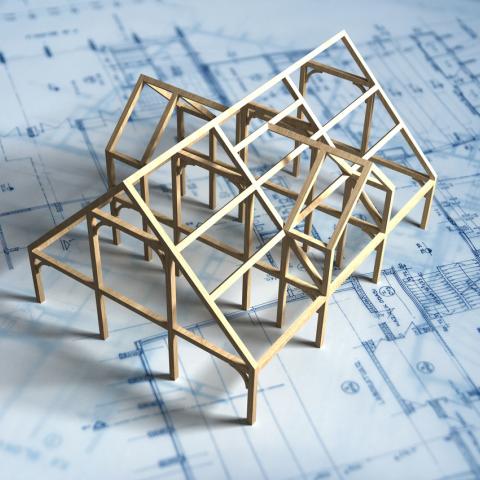Will we ever go back to wearing suits?

By Gareth Jones
Last week one of my colleagues did something shocking, almost subversive on one of our regular team calls – he wore a suit and tie. After 12 months of working from home – appearing on screen with full formal work attire seemed strikingly odd and even a challenge to our accepted norms.
It is fair to say that people may have been unsure of the appropriate etiquette at the beginning of the first lockdown last March, but by now a sort of cultural norm has been established – generally involving a smart-casual look for external-facing calls. For men, this typically means a shirt with a collar, perhaps with a sweater. It is, of course, important to look presentable – at least the part of you that’s visible on screen – what goes on elsewhere is less important (a point nicely satirised by this magazine cover) – but also something you’d conceivably wear in your own home. A suit jacket and tie, on the other hand, now appears forced and unnatural, especially if your home isn’t particularly large or grand. Sitting in a small spare bedroom or kitchen everyday in full work attire seems particularly absurd at this moment in time.
We are now, thankfully, progressing through the roadmap out of lockdown. So perhaps a key question to consider is whether things will go back to normal once we return to our offices and our normal places of work? Will we dust off our suits and wear them for five-days a week (assuming they haven’t been completely moth-eaten)? The answer in a lot of cases -- is perhaps not. Many people have observed that the pandemic has accelerated trends that were already taking place (e.g. online shopping and remote working). Is the decline of formal attire and sartorial standards another one of these trends?
Cultural trends, such as fashion, are hard to predict. However, trends in formal wear are closely linked people’s social status and socio-economic trends – a point that’s been understood for centuries. The 19th Century economist and sociologist, Thorstein Veblen observed in his book The Theory of the Leisure Class that refined clothes are a mark of social status precisely because they are impractical. At the time of the book’s publication, this meant items of clothing such as top hats, for men, or corsets for women – attire that showed you were completely unsuited to manual work and therefore above the need to do it – and, as such, of higher social status. Veblen noted that “Elegant dress serves its purpose of elegance not only in that it is expensive, but also because it is the insignia of leisure. It not only shows that the wearer is able to consume a relatively large value, but it argues at the same time that he consumes without producing.”
People don’t wear top hats and corsets much these days of course, but the more modern equivalents (e.g. suit and ties for men, high heels for women) arguably serve a similar purpose. They show that you belong in a professional office-based environment. Their importance in the workplace, however, appeared to be diminishing long before the pandemic started.
The reasons as to why this is happening are most likely quite complex – linked to changes in the workplace, culture and social mobility. An important factor though is the role of elites in setting these trends. The business-elite are now dominated by tech billionaires who appear indifferent to wearing smart clothes (think of Steve Jobs in his jeans, trainers and black polo-neck jumper) or entrepreneurs and financiers who think of themselves more as creative artists than typical business figures. This indifference filters down the business hierarchy until bankers, lawyers and other parts of professional services industry dress more-and-more casually until the only people wearing a suit are the ones who really want to or have to.
Does this mean that we can throw our suits and formal office clothes away for good? That would probably be unwise. Many of us will still regularly encounter enough formal meetings and situations in our working week to warrant them – but in many workplaces, the idea of wearing our formal attire five days a week now seems to belong in the past.









